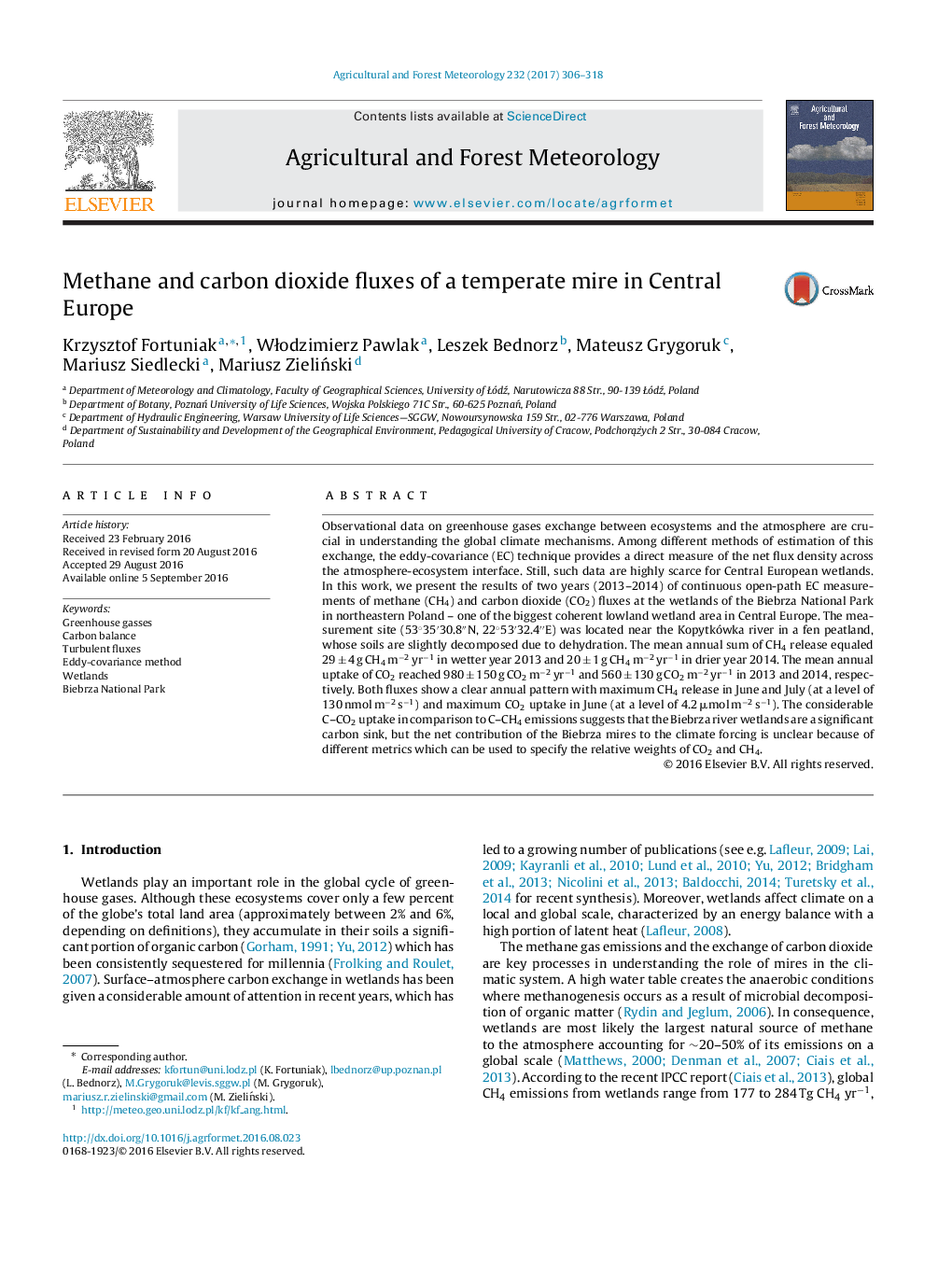| کد مقاله | کد نشریه | سال انتشار | مقاله انگلیسی | نسخه تمام متن |
|---|---|---|---|---|
| 6458089 | 1420865 | 2017 | 13 صفحه PDF | دانلود رایگان |
- Two years of CH4 and CO2 flux measurements in a wetland in north-east Poland.
- CH4 emissions 29 ± 4 g mâ2 yrâ1 in wetter year and 20 ± 1 g mâ2 yrâ1 in drier year.
- CO2 uptake 980 ± 150 g mâ2 yrâ1 in wetter year and 560 ± 130 g mâ2 yrâ1 in drier year.
- These annual exchanges are well within ranges found for other temperate wetlands.
Observational data on greenhouse gases exchange between ecosystems and the atmosphere are crucial in understanding the global climate mechanisms. Among different methods of estimation of this exchange, the eddy-covariance (EC) technique provides a direct measure of the net flux density across the atmosphere-ecosystem interface. Still, such data are highly scarce for Central European wetlands. In this work, we present the results of two years (2013-2014) of continuous open-path EC measurements of methane (CH4) and carbon dioxide (CO2) fluxes at the wetlands of the Biebrza National Park in northeastern Poland - one of the biggest coherent lowland wetland area in Central Europe. The measurement site (53°35â²30.8â³N, 22°53â²32.4â³E) was located near the Kopytkówka river in a fen peatland, whose soils are slightly decomposed due to dehydration. The mean annual sum of CH4 release equaled 29 ± 4 g CH4 mâ2 yrâ1 in wetter year 2013 and 20 ± 1 g CH4 mâ2 yrâ1 in drier year 2014. The mean annual uptake of CO2 reached 980 ± 150 g CO2 mâ2 yrâ1 and 560 ± 130 g CO2 mâ2 yrâ1 in 2013 and 2014, respectively. Both fluxes show a clear annual pattern with maximum CH4 release in June and July (at a level of 130 nmol mâ2 sâ1) and maximum CO2 uptake in June (at a level of 4.2 μmol mâ2 sâ1). The considerable C-CO2 uptake in comparison to C-CH4 emissions suggests that the Biebrza river wetlands are a significant carbon sink, but the net contribution of the Biebrza mires to the climate forcing is unclear because of different metrics which can be used to specify the relative weights of CO2 and CH4.
321
Journal: Agricultural and Forest Meteorology - Volume 232, 15 January 2017, Pages 306-318
